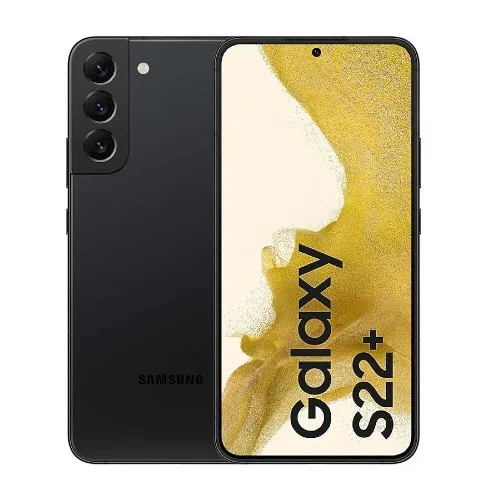Samsung Galaxy S22+ review: Desperately seeking innovation
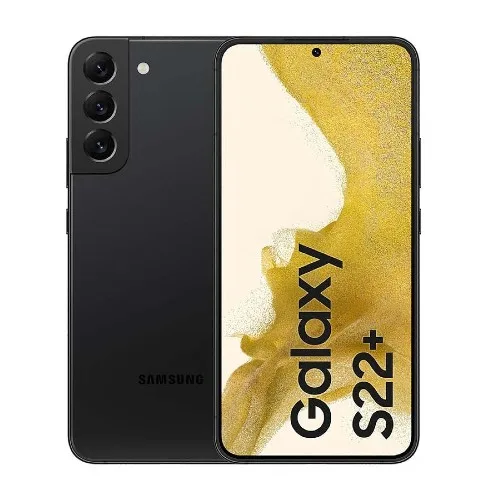
-
- Battery Score
4
- Camera Score
4
- Design Score
4
- Performance Score
4
- Battery Score
4
Summary
Quick verdict: The Samsung Galaxy S22+ isn't the innovative reimagining of phones that Samsung promises. It's a slight performance upgrade on the S21+, except where it's an active downgrade.
- Good low light shooting
- Snapdragon 8 Gen 1 has great GPU performance
- Wide range of colour choices
- 4 years of Android updates
- Average battery life at best
- It's the S21+, just a little bit faster
- No microSD card support
Details
Pricing & Availability
| RRP | $0 |
| Launch date | 2022-02 |
Samsung's promise for the Galaxy S22 line is that it's packed with next generation innovation, making them unlike phones that have come before. Sadly, this isn't true at all. The Samsung Galaxy S22+ is a fine phone. In just about every respect, it's simply a specification upgrade to the S21+ that came before it at best, and in some cases, a downgrade.
You won't get a dud if you buy the S22+, but it's hard to recommend it against the current competition in this space. That's especially true when the cheaper S22 should offer the same experiences for less money.
Design: This all feels somehow familiar
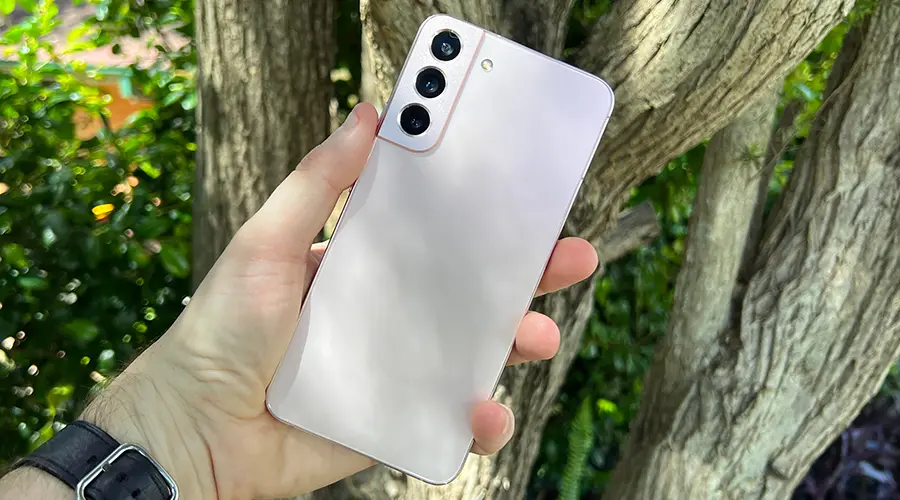
Image: Alex Kidman/Finder
For all of Samsung's talk of innovation, the design of the Samsung Galaxy S22+ certainly doesn't feel all that innovative.
It's the lightest of updates from the design used in last year's model, and I reckon you'd have to stare closely to spot the differences.
The display on the Galaxy S22+ is a 6.6 inch Dynamic AMOLED with a resolution of 2340x1080, slightly down on last year's 6.7 inch 2400x1080 pixel display.
That might make a very slight difference to its handling ability. At the same time it feels like a comparison that doesn't favour the newer phone if you really wanted a larger display. It's also a flat display, so if you crave curves, you'll need to up your budget to grab the Galaxy S22 Ultra.
Display refresh rate can either be set at 60Hz, or put into "adaptive" motion smoothness mode at up to 120Hz, which is similar again to last year's model.
Around the back, you get the same curved camera bump that blends into the curves at the side.
Just like last year, the downside here is that the Galaxy S22+ can never sit flat on a desk unless you've got it in a case to bring the rest of the phone's rear up. Seriously, though, buy a case for a premium phone. You'll thank me when you sell it later and it's worth more.
A case will also help to protect the Galaxy S22+, although it should in theory be a little more robust than its predecessor. The Galaxy S22+ has Corning Gorilla Glass Victus+ wrapped around the front and back.
Samsung did want its nice shiny pink gold phone back in one piece, so I resisted the urge to bounce it down a few staircases.
I will give Samsung credit for bringing a lot of phone colour variants to the Australian market.
All retailers will sell the Galaxy S22+ in Phantom White, Phantom Black, Green or Pink Gold, which is the model colour I've tested with. Additionally, Samsung reserves 4 colours for its own stores and online store only. If you want Graphite, Cream, Sky Blue or Violet, you'll have to score it through Samsung itself.
Camera: Good, but not best in class
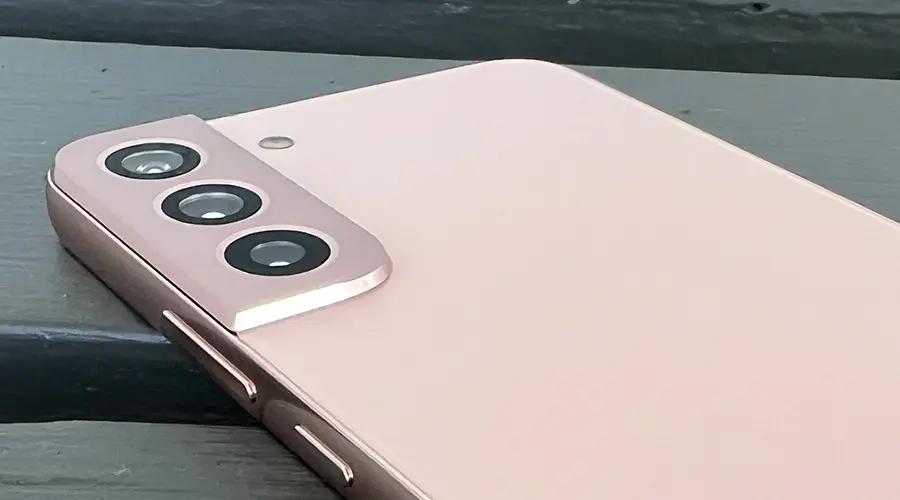
Image: Alex Kidman/Finder
The battle for premium smartphone supremacy often resolves itself on camera quality. Samsung and Apple are old hands here, but Google has offered up a very compelling option with the Pixel 6 Pro recently as well.
Into this arena strides the Samsung Galaxy S22+. It's equipped with a trio of rear lenses, comprising a primary 50MP f/1.8 wide lens, secondary 12MP f/2.2 ultra-wide and tertiary 10MP f/2.4 3x Optical Zoom lens. At the front in the holepunch, you'll find a 10MP f/2.2 sensor.
Phone cameras are far more than the sum of their megapixels.
Samsung's big pitch is that it's using ever more intelligent AI to pump up the Galaxy S22+'s abilities to shoot portrait photos and low light shots.
Any mid-range phone should be capable of taking great consumer-grade photos in regular lighting conditions by now. You don't have to spend Galaxy S22+ money to get that.
Where premium phones still have an edge is in low light conditions. Samsung has been particularly keen to talk up its improvements in low light photography.
That's a very competitive field, with phones from Apple and Google currently giving the best results in our tests for low light shooting.
To test this, I grabbed a bag filled with phones at similar prices to the Galaxy S22+ to go out for a little night time shooting.
Alongside the Galaxy S22+, I took an Apple iPhone 13, Apple iPhone 13 Pro, Google Pixel 6 Pro and a Samsung Galaxy S21 FE.
The Apple and Google phones can be had for similar prices to the S22+ depending on storage provisions, while the S21 FE is considerably cheaper.
The S22+ shares the same camera layout as the lower-cost Galaxy S22, so I was keen to see how much of a difference – or how much money you could save – if you opted for the lower cost S21 FE instead.
All shots were handheld without the use of a tripod, although I did use a fence as a balancing aid for a photo. Night mode was used for each shot, and in every instance I allowed the phone to set focal points.
First up at a park, a nearby colourful excavator gave me the opportunity to see how each phone interpreted colour in lower light.
The Galaxy S21 FE was easily the worst performer in the bunch. Not bad for a phone in its price bracket to be fair, but not up to the standard of the other tested handsets.

Image: Alex Kidman/Finder
The iPhone 13 and iPhone 13 Pro take this shot nearly identically, though the straight 13 brightened the shot itself more than the 13 Pro, especially on the excavator body.

Image: Alex Kidman/Finder

Image: Alex Kidman/Finder
The Google Pixel 6 Pro impresses with good colour detail and light pick-up:
Image: Alex Kidman/Finder
How does the Galaxy S22+ compare? Very well, as it turns out, taking line honours from the Pixel 6 Pro thanks to picking up a tad more detail in the foreground while retaining colour in the vehicle body:
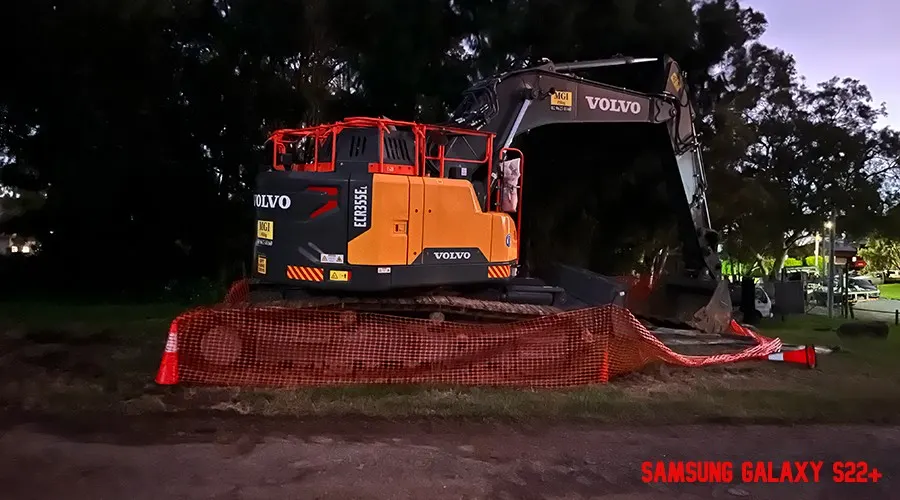
Image: Alex Kidman/Finder
Moving onto another subject, the playing field nearby in a long shot with a bright light source coming from the clubhouse. Lots of detail to pick up, lots of ways for shots to blow out as well.
The Galaxy S21 FE was once again in last place with a slightly noisy shot, although it is much closer to its competitors for this shot:
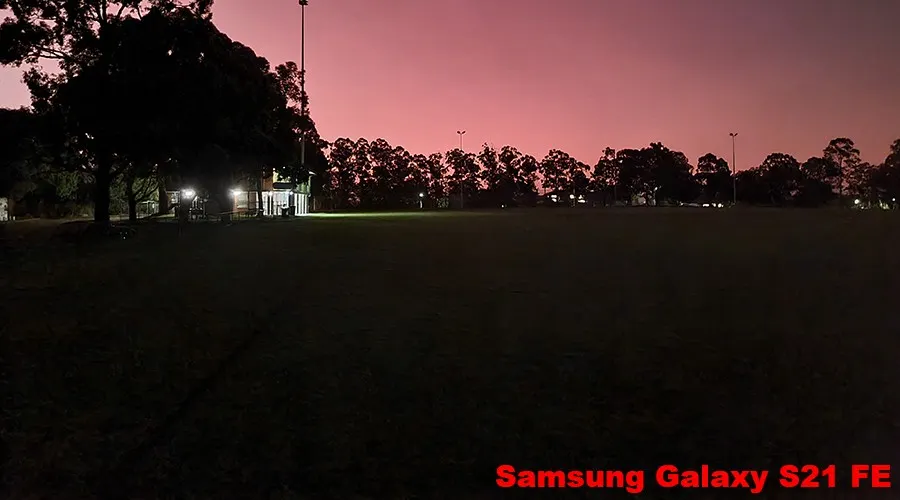
Image: Alex Kidman/Finder
The iPhone 13's interpretation of the scene adds a little more purple than the sky really had at the time, though it's not an unpleasant shot:
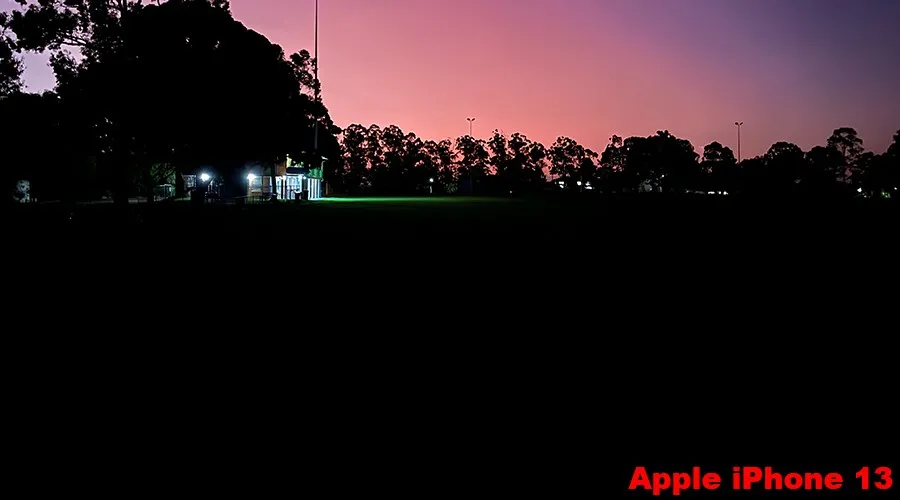
Image: Alex Kidman/Finder
The iPhone 13 Pro picks up more sky light in the scene, but leaves the foreground quite dark:
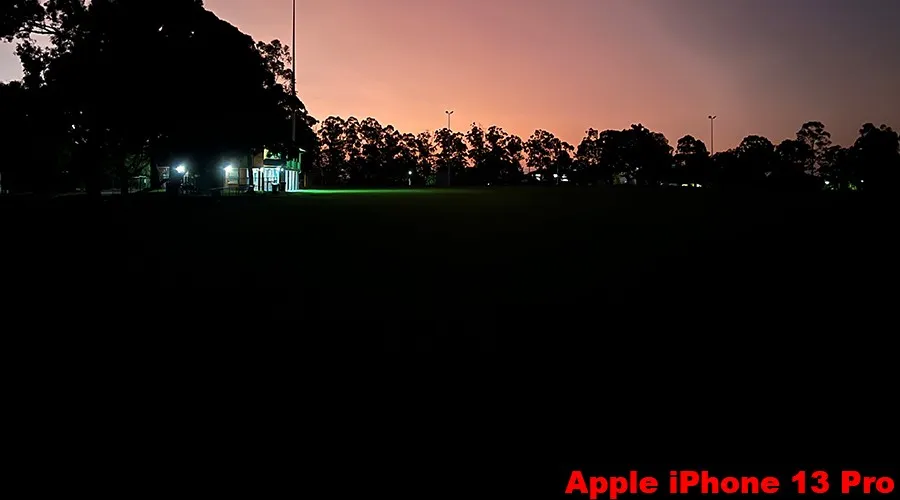
Image: Alex Kidman/Finder
And the Galaxy S22+ does a similar job, albeit with a more purple hue again:
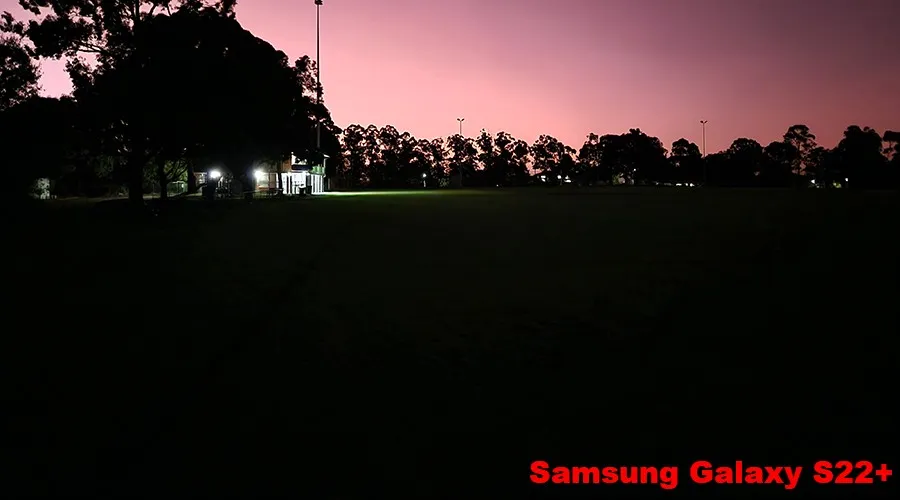
Image: Alex Kidman/Finder
The Google Pixel 6 Pro takes the round for detail, picking up more foreground detail than any other shot:
Image: Alex Kidman/Finder
For my final low light shot, with the light fading away, I shot directly into some trees and bushes nearby.
No, I haven't suddenly become half-koala or anything.
The object here wasn't particularly providing a pleasing shot, but more of a torture test of each phone's capability to pick up light and make sense of it with its own take on post-processing.
For what it's worth, I could just make out that there were trees and bushes in front of my eyes, but nothing else.
No prizes for guessing that the Galaxy S21 FE was the worst performer of the bunch:
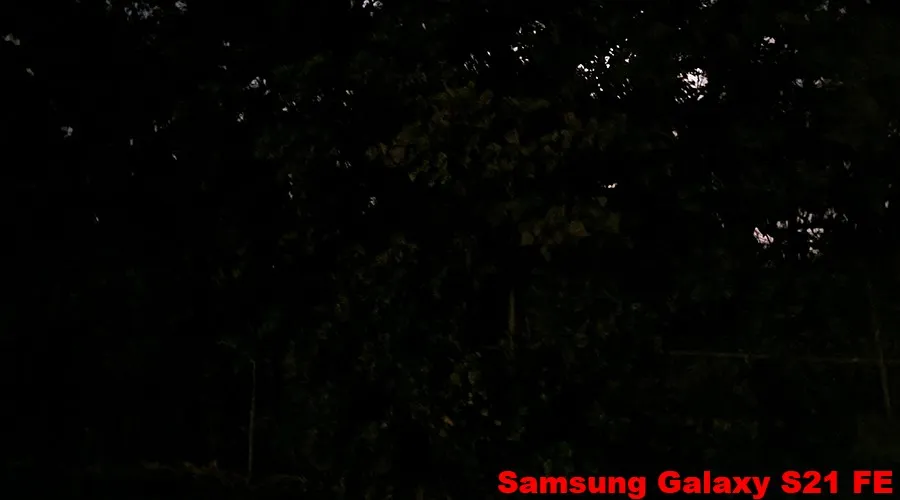
Image: Alex Kidman/Finder
The iPhone 13 gets a little more detail out of the murk:

Image: Alex Kidman/Finder
This was the rare shot where the Pixel 6 Pro faltered a little, with its AI post-processing delivering some colour banding across the photo, especially towards the bottom of the shot:
Image: Alex Kidman/Finder
The iPhone 13 Pro picks up a little more detail while retaining a more realistic colour pattern:

Image: Alex Kidman/Finder
But it's the Galaxy S22+ that delivers the best detail here by a small margin, especially on some of the leaves:
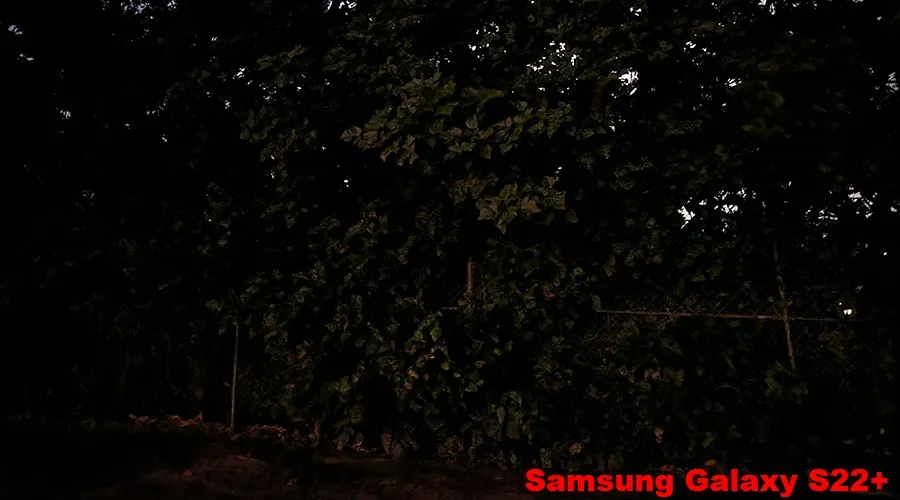
Image: Alex Kidman/Finder
The Galaxy S22+ acquits itself well, but there's another problem it faces.
The problem for the S22+ here is that it's got the same camera specifications and processor as the cheaper Galaxy S22. If you're keen on photography and don't need its larger display, that would make the S22 the smarter buy.
Fans of irony might like to note that this is the exact same issue Apple has with the iPhone 13 Pro Max and the iPhone 13 Pro.
Outside low light, the Galaxy S22+ shoots pleasing photos with a degree of ease in most situations.
Samsung has made some changes to its camera app to appeal more to the mainstream, with portrait, photo and video modes in the main app, and all other functions hiding in a "more" section.
You still get options for slow motion, pro shooting, food photos and the automated single take mode, but they're no longer immediately on display. Or they're no longer cluttering up the UI, depending on your point of view.
Samsung's claim is that it has AI optimisation for cleaner portrait photos, especially around detecting hair in shots correctly for focus. This is not a problem I have to speak of.

Image: Alex Kidman/Finder
You also get optical zoom, with Samsung downsampling the primary 50MP sensor to allow for up to 30x "Space Zoom". As with the 100x Space Zoom on the S22 Ultra and S21 Ultra before it, you really don't want to push it all the way out unless you have to. Here's an example of why:
Here's a shot taken at a nearby shopping mall with the wide lens:

Image: Alex Kidman/Finder
The same shot on the primary wide lens, all still good:

Image: Alex Kidman/Finder
And the 3x optical zoom handles it just fine, as you'd expect:

Image: Alex Kidman/Finder
The 10x zoom, using both the optical lens and a hybrid downsample from the primary lens is quite fair:

Image: Alex Kidman/Finder
The 30x zoom? Oh, dear:

Image: Alex Kidman/Finder
Sample Photos:

Image: Alex Kidman/Finder

Image: Alex Kidman/Finder

Image: Alex Kidman/Finder

Image: Alex Kidman/Finder
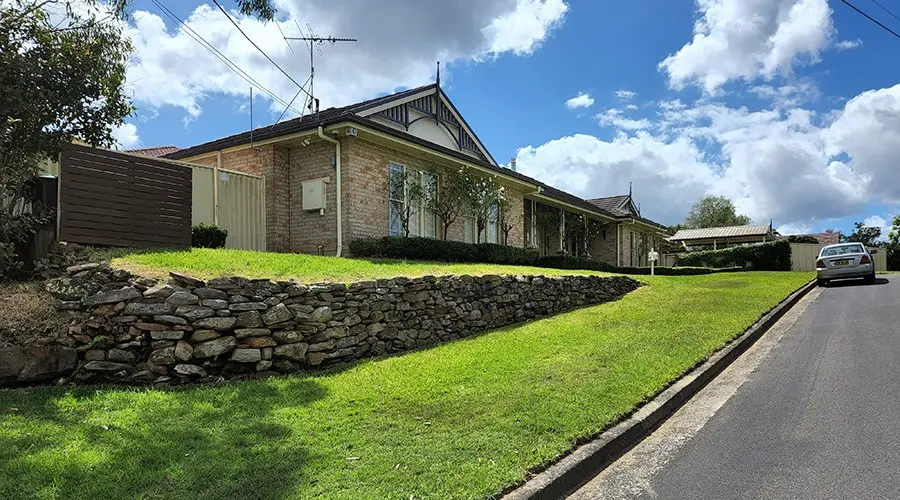
Image: Alex Kidman/Finder

Image: Alex Kidman/Finder
Performance: Plenty of power and years of Android upgrades
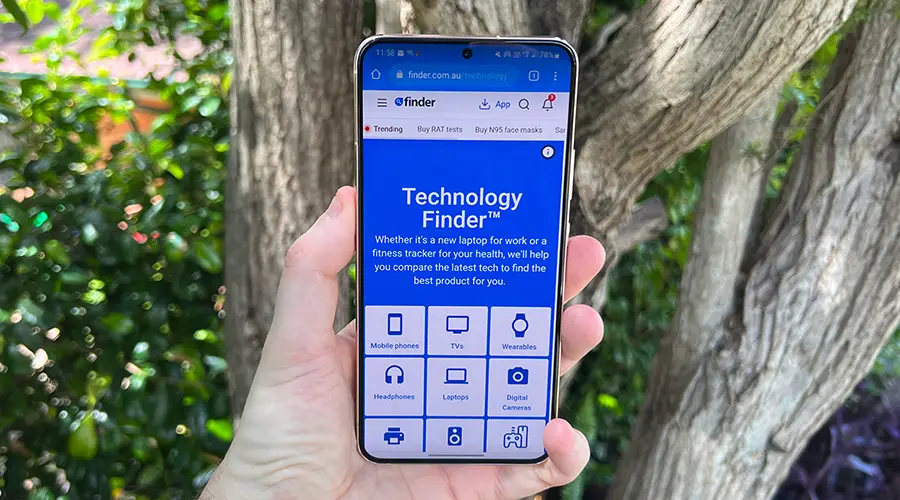
Image: Alex Kidman/Finder
Depending on where on the planet you acquire it from, the Galaxy S22+ is either built on one of Samsung's own Exynos 2200 processors, or the Snapdragon 8 Gen 1 from Qualcomm. For every non-foldable Samsung in recent memory save the 5G variant of the Galaxy S20 FE, Australians have been put into the Exynos basket.
Exynos is fine, but typically the Qualcomm variant in a given year is slightly better. If you're paying premium money, why wouldn't you want better?
It's a surprise then that Samsung Australia has opted to offer the Qualcomm Snapdragon 8 Gen 1 variant to Australians this time around. It does mean that if you're using a grey importer, it would be wise to check which model and CPU you're getting.
There's also some variance in storage, which is fixed, and RAM configurations. In Australia, the Galaxy S22+ sells with either 128GB or 256GB of storage and 8GB of RAM.
The Samsung Galaxy S22+ is the first phone in Australia running on the new Qualcomm hardware, so I was keen to see how it would compare against other premium smartphones in this space. It's not only got to take on the more obvious Apple competition, but also Google with its Tensor processor running the Pixel 6 and Pixel 6 Pro.
Here's how the Galaxy S22+ compared against similarly priced phones using Geekbench 5's CPU test, as well as other Samsung competitors if you're brand loyal:
Apple still retains straight line dominance in the CPU space over its Android counterparts, and it's interesting to note the balance between the S21 Ultra's Exynos and the S22+ Qualcomm in multi and single core applications. Still, the practical upshot here is that while Samsung can't claim dominance in this space, for running apps there's no shortage of power to draw from.
The use of the Qualcomm Snapdragon 8 Gen 1 means that the Galaxy S22+ also has a new GPU core to play with, the Adreno 730. Here, the distance between Apple and Android is massively shortened. Here's how the same phones compared using 3DMark's Wild Life test:
If you're a gamer, or you're looking to do a lot of on-device photo or video editing, that GPU score is rather compelling, because it's well above what we've seen to date from Android devices.
Speaking of Android, the Galaxy S22+ ships with Android 12, and Samsung's really pushing the margins with update promises.
It's promising 4 years of Android updates, which means that the Galaxy S22+ should see its way through to Android 16.
And 4 upgrades is 1 more than the Pixel 6 phones will see, though they'll get those updates a little faster than Samsung pushes them out.
The Galaxy S22+ is also 5G compatible, but in Australia, only for sub-6GHz frequencies. Google's shown that it can incorporate both sub-6GHz and faster mmWave 5G into a single phone in the Google Pixel 6 Pro.
I was hoping that Samsung might lead the charge for alternatives in its flagship range, but it's not to be. Samsung does make variants of the S22 family with 5G mmWave built in, but they're not selling them locally.
I've also got to flag that while the retail models of the S22+ you'll be able to own in Australia will be sub-6Ghz 5GH only, I can't say anything about their relative performance on Australian networks.
The model of the Galaxy S22+ loaned to me for testing was a US-specific variant that lacked support for the 5G bands used in Australia.
I wanted my SIM to connect to 5G networks.
At a software level, I could ask the Galaxy S22+ to use 5G networks.
At a hardware level, the model as tested couldn't do it.
For what it's worth, 4G connectivity on the Telstra network during my review period was decent, but not spectacular, as you'd expect.
A slight upside away from mobile networks is that the Galaxy S22+ features Wi-Fi 6E, a technical uptick from the Wi-Fi 6 that the regular Galaxy S22 ships with.
Battery: Not quite premium, especially once 5G is in play
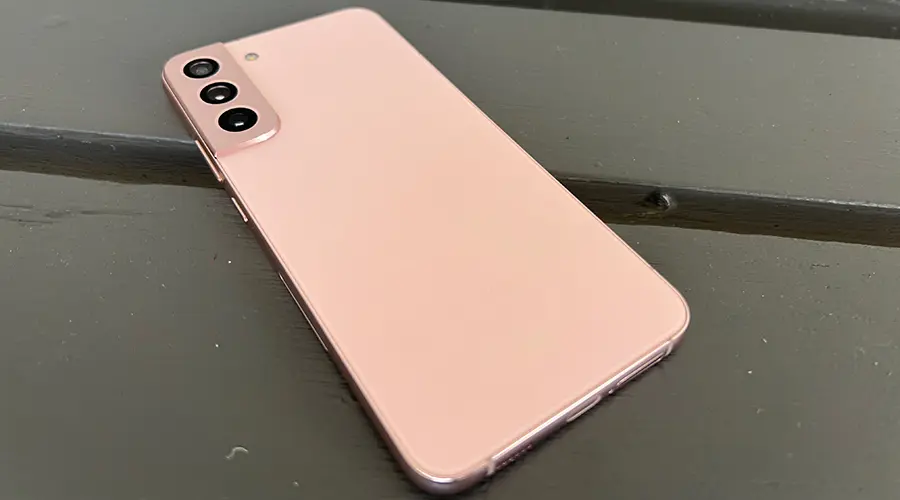
Image: Alex Kidman/Finder
Samsung phones have varied more than most brands when it comes to battery life over the years. Some models have been absolute powerhouses, while others struggle to last through the working day.
The Galaxy S22+ frame houses a 4,500mAh sealed battery, with charging via either USB-C, Qi Wireless charging and support for reverse wireless charging if you've got a nearby electric toothbrush in need of some power. All of this would match the S21+ specification, were it not for the fact that the older model had a 4,800mAh battery. I guess that's the price you pay for a smaller phone, because there's simply less space to pack the electrons into.
A point of difference between the Galaxy S22+ and the regular S22 is that the S22+ can charge at up to 45W on a wireless charger, where the S22 tops at 25W. Neither phone ships with a charger, as is the style for many new phones.
The needs of the 120Hz display and the new Qualcomm Snapdragon 8 Gen 1 were always going to take their toll on the Galaxy S22+'s battery life. The question was to what extent. To test that out, I put it through Finder's battery life test for a little comparative evaluation:
Battery life is always subjective because everyone's usage varies. Phones that can hit at least 90% remaining on that test shouldn't have an issue getting through a regular day.
That's been my experience with the Galaxy S22+ during my review period, with 1 significant caveat.
As noted above, the Galaxy S22+ model used for review was an international model that lacked 5G support within Australia.
You know what kills battery life fast? 5G usage, that's what.
I haven't been able to test this out, but I'd expect the Galaxy S22+ to drop a few percentage points at the least once you're on a 5G network.
The big problem here is that Samsung's competitors in the same space manage much better battery life, including when using 5G.
The comparison is not kind to the Galaxy S22+, although it's even more pronounced for the Galaxy S22 Ultra, which had similar no-go-5G problems in our review period.
Should you buy it?
- Buy it if you're a Samsung fan who needs a larger screen than the S22, or doesn't want the Note-styled S22 Ultra.
- Don't buy it if you want superior battery life or all-new style.
It's great to have a degree of choice within premium phone ranges. I can totally see where some may want the larger display on the S22+ over the regular S22, while not spending quite as much as Samsung wants for the S22 Ultra.
However, it's still the difficult middle child, because most of its key features are to be found on the regular S22, while the Ultra gets the really premium goodies if you're after flagship performance on a Samsung phone.
It also doesn't quite live up to Samsung's promise of "innovation" for the S22 line either. There's no mmWave 5G, the design is pretty much exactly the same as last year's phones, and the battery life is actually a little worse than on last year's models when they were running 5G, which we couldn't test for this review.
Samsung Galaxy S22+ review: Pricing and availability

Specifications
Display
Camera
Physical Dimensions
Connectivity
Power, storage and battery
Device features
How we tested
The Galaxy S22+ used in this review was an international model loaned to me by Samsung for the purposes of review. It was tested over a 1-week period to assess build quality, battery life, performance and camera quality, both within its own specifications and comparatively to other phones you could purchase at or around the same price point. All benchmark tests were run 3 times to produce an average score, because software and hardware factors can lead to variance within individual runs. The author has over 20 years of experience testing mobile phones.
Sources
Your reviews
Alex Finder
Senior editor
You are about to post a question on finder.com.au:
- Do not enter personal information (eg. surname, phone number, bank details) as your question will be made public
- finder.com.au is a financial comparison and information service, not a bank or product provider
- We cannot provide you with personal advice or recommendations
- Your answer might already be waiting – check previous questions below to see if yours has already been asked
Finder only provides general advice and factual information, so consider your own circumstances, or seek advice before you decide to act on our content. By submitting a question, you're accepting our Terms Of Service and Finder Group Privacy & Cookies Policy.
This site is protected by reCAPTCHA and the Privacy Policy and Terms of Service apply.

